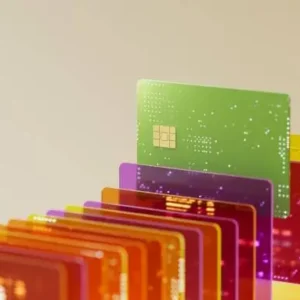
Outline:
1: Introduction
- Importance of financial literacy
- The shift into the digital age
- Preview of AI, blockchain, and fintech innovations
2: Understanding Financial Literacy in the Digital Age
- Traditional vs Modern Financial Literacy
- Why the Digital Age Requires a New Literacy
- The Cost of Being Financially Illiterate in Today’s Economy
3: The Rise of AI in Financial Literacy Tools
- How AI Personalizes Financial Education
- Chatbots and Smart Assistants for Money Management
- AI-Powered Budgeting and Goal Setting Apps
4: Blockchain’s Role in Financial Education and Access
- Decentralization and Trust in Education
- Smart Contracts for Transparent Learning Modules
- Tokenization: Rewarding Financial Learning Behavior
5: Fintech Innovations Transforming Learning Experiences
- Gamified Financial Learning Apps
- Robo-Advisors and Investment Simulations
- Microlearning via Mobile Finance Apps
6: Real-Time Financial Data and Its Impact on Learning
- Immediate Feedback Through Dashboards
- Understanding Spending Habits Instantly
- From Passive Learning to Interactive Experiences
7: The Democratization of Financial Education
- Free Tools and Courses Now Available to All
- Crowdsourced Knowledge and Peer-to-Peer Learning
- YouTube, TikTok, and Financial Influencers
8: Common Barriers to Digital Financial Literacy
- Digital Divide and Unequal Access
- Misinformation and Predatory Platforms
- Over-Reliance on Automation Without Understanding
9: Financial Literacy and the Younger Generation
- Gen Z and Millennial Learning Preferences
- Why Schools Are Adopting Fintech Curriculum
- The Rise of Digital Natives in Financial Management
10: High-Impact Tools Redefining the Learning Journey
- Top Financial Literacy Platforms in 2025
- Best AI Tools for Budgeting and Credit Building
- Blockchain Projects Driving Personal Finance Learning
11: Creating Personalized Financial Education Plans
- AI-Driven Roadmaps Based on Behavior
- Micro-Modules for Bite-Sized Learning
- Integrating Digital Literacy into Daily Habits
12: Regulatory Movements and Digital Finance Education
- Financial Education as a Human Right
- GDPR, CCPA, and Data Ethics in EdTech
- Policies Promoting Transparent Fintech Practices
13: The Role of Institutions in Driving Digital Literacy
- What Schools, Banks, and Governments Must Do
- Collaborations Between EdTech and Fintech
- Employer-Based Financial Literacy Programs
14: Best Practices to Embrace Financial Literacy in the Digital Age
- Start With Free AI Tools
- Stay Informed on Emerging Tech
- Join Online Communities for Peer Support
15: Conclusion: The Urgency and Power of Financial Literacy in the Digital Age
- Summary of trends
- Why action is necessary now
- Final thought and call to action
16: FAQs
- How is AI improving financial literacy?
- What are the best free financial literacy apps today?
- Can blockchain be used for personal finance education?
- Why is fintech crucial for younger learners?
- How can I start improving my digital financial literacy?
Financial Literacy in the Digital Age: Powerful AI & Blockchain Tools Redefining Personal Finance Education
Introduction
Financial literacy in the digital age is no longer a luxury—it’s a survival skill. The world has shifted, and the old ways of learning about money no longer work. Gone are the days when a dusty economics textbook or a family budgeting notebook could prepare you for credit cards, crypto wallets, and algorithmic investment platforms. In this blog, we’ll explore how AI, blockchain, and fintech innovations are redefining personal finance education—and what that means for your financial future.
If you’ve ever felt overwhelmed trying to understand modern finance, you’re not alone. The good news? There are cutting-edge tools designed to teach you everything you need to know—and they’re more accessible than ever.
Understanding Financial Literacy in the Digital Age
Traditional vs Modern Financial Literacy
Old-school financial literacy was about balancing checkbooks, understanding compound interest, and saving for a rainy day. While those principles still matter, they don’t address today’s financial landscape filled with cryptocurrencies, robo-advisors, digital wallets, and online scams.
Why the Digital Age Requires a New Literacy
The world has changed—dramatically. And the way we manage money has changed with it. Financial literacy in the digital age isn’t just about knowing how to write a check or balance a budget on paper. It’s about understanding how AI tools, blockchain systems, digital wallets, and automated investing platforms operate. Why? Because the very fabric of our financial lives is now digital—and staying financially safe, smart, and successful means learning a whole new language.
Old Literacy: Saving, Spending, and Interest
Back in the day, knowing how to:
- Save a portion of your paycheck
- Understand interest rates
- Manage credit card bills
…was enough to get by. That was the “old school” of financial wisdom—and it still has value.
But here’s the catch: it’s no longer enough.
New Literacy: Data, Devices, and Decentralization
Today’s financial landscape requires new knowledge across these key digital areas:
- AI Budgeting Tools: Can you tell if an AI-generated savings suggestion is good for your income level?
- Robo-Advisors: Do you know how automatic portfolio rebalancing works?
- Buy Now, Pay Later Apps: Are you aware of the hidden interest rates and credit impact?
- Blockchain & Smart Contracts: Do you know how cryptocurrencies are stored, transferred, and taxed?
- Cybersecurity: Are you safeguarding your financial data from phishing scams, malware, and account takeovers?
That’s the new literacy—and if you don’t know how to navigate it, you’re not financially literate by modern standards.
Everything Is Real-Time, and So Are the Risks
In the digital age, your money moves in seconds. And so can your mistakes.
- You can lose your crypto wallet in a phishing attack in one click
- You can accidentally subscribe to a $100/month service you didn’t want
- You can overspend in apps that use behavioral science to nudge you into more purchases
Financial education must evolve to teach people not just what to do—but what to avoid.
Why the Pace of Innovation Demands Continuous Learning
The finance space is now fueled by constant innovation. Just look at the last 5 years:
- Peer-to-peer lending replaced by decentralized lending
- Credit score systems challenged by real-time income-based underwriting
- Payment platforms evolving from card swipes to QR codes to facial recognition
If you’re not learning continuously, you’re falling behind.
💡 Digital finance isn’t static. What works today may become obsolete tomorrow. New literacy means lifelong learning.
Financial Products Are Now Personalized and Programmed
With AI analyzing your income, expenses, goals, and risk tolerance, banks and platforms can offer customized financial advice. But can you tell the difference between:
- A good offer vs. a marketing ploy?
- A fair interest rate vs. a high-risk bait-and-switch?
- A helpful nudge vs. a manipulative notification?
The line between education and persuasion is thin in digital finance. That’s why literacy must include digital critical thinking.
You Are Your Own CFO in the Digital Age
Without a doubt, you’re now responsible for more decisions than ever before:
- Should you use a high-yield savings account or a stablecoin staking platform?
- Is it better to invest in fractional shares or ETFs?
- Do you trust a finance TikToker or your traditional bank?
And often, there’s no human advisor to guide you—only apps and algorithms. That’s why digital financial literacy = empowerment.
Digital Missteps Have Long-Term Consequences
A bad decision in the digital space doesn’t just hurt now—it echoes into your future.
- A missed student loan payment reported by an app can wreck your credit
- Accepting terms you didn’t read in a finance app could expose your personal data
- Falling for an influencer’s “get-rich-quick” crypto scheme can drain your life savings
Financial education must now go hand-in-hand with cybersecurity, digital ethics, and media literacy.
Bottom Line: If Money Has Gone Digital, So Must Our Minds
We’re living in a world where our financial future is shaped by algorithms, platforms, and digital trends. If we don’t understand these forces, we can’t control them. That’s why the digital age demands a new kind of literacy—faster, deeper, and more dynamic than ever before.
You don’t need to become a coder, but you do need to become a digitally-aware consumer. The difference between thriving and just surviving financially could be one app, one click, or one insight away.
The Cost of Being Financially Illiterate in Today’s Economy
Poor digital financial knowledge leads to:
- Higher interest rates
- Risky investments
- Falling for scams
- Overspending via “Buy Now, Pay Later” traps
The price of ignorance is no longer just money—it’s missed opportunities.
The Rise of AI in Financial Literacy Tools
How AI Personalizes Financial Education
AI isn’t just for techies. Apps like Cleo, Albert, and Wally use artificial intelligence to deliver personalized lessons on saving, investing, and spending based on your income and habits.
They track your spending, ask questions like a money coach, and even roast your bad habits—yes, humor helps you learn!
Chatbots and Smart Assistants for Money Management
Ever asked Siri how much you spent on food this week? Or told Alexa to transfer funds to your savings? AI assistants are making financial education conversational—literally.
AI-Powered Budgeting and Goal Setting Apps
Apps like YNAB (You Need a Budget) and Monarch Money use machine learning to adjust your budget goals dynamically as your income or behavior changes. That’s real-time financial coaching, at no cost.
Blockchain’s Role in Financial Education and Access
Decentralization and Trust in Education
Blockchain removes central control, giving people more direct access to financial education platforms. Peer-to-peer learning models like DeFi Learn or BitDegree offer blockchain-verified certifications that are tamper-proof and globally recognized.
Smart Contracts for Transparent Learning Modules
Imagine online finance courses where progress, rewards, and certifications are managed through smart contracts—unhackable, transparent, and fair.
Projects like Ethereum-based OpenCerts are already doing this in education.
Tokenization: Rewarding Financial Learning Behavior
Learning can now earn you crypto. Platforms like Rabbithole and CoinMarketCap Learn reward users with tokens for completing finance lessons. It’s gamification with real-world value.
Fintech Innovations Transforming Learning Experiences
Gamified Financial Learning Apps
Apps like Zogo and Kahoot! Finance make learning addictive by combining quizzes, badges, and rewards. They’re proven to increase retention and engagement—especially with younger audiences.
Robo-Advisors and Investment Simulations
Platforms like Wealthfront and Betterment allow users to simulate real investment scenarios. No money risked, but tons of insight gained.
Microlearning via Mobile Finance Apps
Instead of long courses, apps now deliver bite-sized lessons—5-minute financial literacy tutorials during your coffee break. Platforms like FinLit, Groww, and Mydoh lead this wave.
Real-Time Financial Data and Its Impact on Learning
Immediate Feedback Through Dashboards
When you spend $200 on takeout and your app instantly shows a warning, it’s a learning moment. Financial apps give immediate feedback, which is more impactful than any textbook.
Understanding Spending Habits Instantly
Apps categorize your spending habits (food, travel, subscriptions) and suggest smarter moves. This kind of behavioral data is gold for financial learning.
From Passive Learning to Interactive Experiences
Forget PDFs and lectures. Interactive platforms like Coursera + Intuit collab courses or edX finance bootcamps blend videos, tests, and budgeting simulators for immersive digital learning.
The Democratization of Financial Education
Free Tools and Courses Now Available to All
You no longer need a financial advisor. You need Wi-Fi. Resources like:
…are completely free.
Crowdsourced Knowledge and Peer-to-Peer Learning
Platforms like Reddit’s r/personalfinance, YouTube channels, and even Discord finance servers allow people to share real-life financial experiences—uncensored and raw.
YouTube, TikTok, and Financial Influencers
Creators like Humphrey Yang, Mark Tilbury, and The Break Platform turn budgeting into binge-worthy content. It’s education in a format people actually want.
Common Barriers to Digital Financial Literacy
Digital Divide and Unequal Access
Not everyone has a smartphone or unlimited data. Financial literacy tools must work offline, support local languages, and lower-end devices to be truly inclusive.
Misinformation and Predatory Platforms
For every good resource, there’s a scam. That’s why digital financial literacy also includes critical thinking and scam detection.
Over-Reliance on Automation Without Understanding
Many users blindly follow AI or app suggestions without understanding them. That’s risky. Tech should empower—not replace—informed decisions.
Financial Literacy and the Younger Generation
Gen Z and Millennial Learning Preferences
They want:
- Mobile-first design
- Video content over long reads
- Interactive tools over static guides
Apps like Gimi, Greenlight, and Goalsetter are built for these preferences.
Why Schools Are Adopting Fintech Curriculum
States like New Jersey and Florida have mandated financial education in high schools. Curriculum is now including:
- Crypto basics
- Responsible credit use
- AI budgeting skills
The Rise of Digital Natives in Financial Management
Young people are managing stocks on Robinhood and buying NFTs before they can drive. If they aren’t taught how, they’ll learn the hard way.
High-Impact Tools Redefining the Learning Journey
Top Financial Literacy Platforms in 2025
These tools turn abstract financial concepts into interactive adventures.
Best AI Tools for Budgeting and Credit Building
- Experian Boost
- Credit Karma AI
- Tally (AI debt manager)
They use data to build your credit score, track payments, and optimize spending.
Blockchain Projects Driving Personal Finance Learning
- BitDegree – Learn & earn crypto
- OpenCerts – Blockchain-based education credentials
- Ethereum-based Coursera Rewards – Coming soon
Creating Personalized Financial Education Plans
AI-Driven Roadmaps Based on Behavior
Tools like Quirk or Lifetise build financial plans based on your personality type, income, and goals.
Micro-Modules for Bite-Sized Learning
Instead of 2-hour lectures, users complete 2-minute lessons, track wins, and receive badges.
Integrating Digital Literacy into Daily Habits
Apps nudge you to learn during idle moments—on your commute, in line, or during breaks.
Regulatory Movements and Digital Finance Education
Financial Education as a Human Right
UNESCO and G20 now recognize financial education as a basic right—just like literacy or clean water.
GDPR, CCPA, and Data Ethics in EdTech
You must know how your financial data is used. Platforms now show:
- What’s collected
- Who sees it
- How it’s stored
Transparency is the new trust.
Policies Promoting Transparent Fintech Practices
Regulators worldwide are pushing for standardized disclosure, age-appropriate content, and real educator oversight in financial apps.
The Role of Institutions in Driving Digital Literacy
What Schools, Banks, and Governments Must Do
- Integrate fintech tools in classrooms
- Offer employee wellness programs
- Fund public-access learning platforms
Collaborations Between EdTech and Fintech
The fusion of EdTech and FinTech is no longer just a buzz in tech circles—it’s becoming one of the most powerful alliances in the digital transformation of financial education. Why? Because EdTech brings scalable, digital-first learning experiences, and FinTech brings real-time, practical financial tools. When combined, they don’t just teach people about money—they help people apply what they’ve learned instantly.
This is the heartbeat of financial literacy in the digital age.
Why EdTech and FinTech Must Join Forces
Financial education that ends in theory is incomplete. Most people don’t learn best from lectures or static content—they learn by doing. That’s where FinTech’s real-time platforms make the difference. By embedding educational modules within financial tools—or vice versa—users are empowered to act as they learn.
Think of it as the difference between reading about swimming and actually getting into the pool with a life vest on. EdTech is the theory, FinTech is the pool.
Real-World Examples of EdTech–FinTech Integration
1. Greenlight + Education Platforms
Greenlight, a debit card for kids and teens, doesn’t just offer banking features—it integrates in-app financial education that teaches savings, investing, and responsible spending. Parents can assign tasks, pay allowances, and kids learn budgeting while actually managing money.
Greenlight has partnered with schools and EdTech programs to scale youth financial literacy across thousands of classrooms in the U.S.
2. Zogo + Credit Unions and Colleges
Zogo gamifies personal finance education through bite-sized lessons and rewards learners with real money or gift cards. It collaborates with banks, credit unions, and universities, embedding itself as both a learning and onboarding platform.
Zogo is a brilliant case of EdTech built directly into FinTech services, helping users build credit and understanding simultaneously.
3. Coursera + Intuit
When Coursera, one of the world’s largest EdTech platforms, partnered with Intuit—the makers of TurboTax and QuickBooks—it created a course that teaches practical financial management using real accounting software.
This collaboration puts learners one step closer to being job-ready, giving them both skills and tools for real-world money management.
How These Collaborations Are Changing the Learning Experience
- From Passive to Active Learning: You’re not just watching a video; you’re budgeting your own expenses as part of the lesson.
- From Hypothetical to Applicable: Simulated investing? Try real-time robo-advisors with risk controls.
- From One-Size-Fits-All to Personalized: AI-driven FinTech apps adjust the learning path based on your behavior and financial goals.
These innovations are pushing the frontier of personalized finance education—because no two people have the same financial background or future.
Opportunities for Future Collaborations
The surface is just being scratched. In the coming years, we’ll likely see:
- Embedded financial education in neobanks and e-wallets (e.g., Chime, Revolut)
- Live mentorship platforms combining EdTech coaches and FinTech advisors
- Blockchain learning networks that issue crypto credentials as proof of financial literacy
- Voice-assisted financial tutors powered by AI (like a hybrid of Alexa and Khan Academy for money)
Why Collaboration Is Essential for Financial Inclusion
For millions in underbanked communities, especially in emerging economies, this kind of collaboration can be life-changing. By combining free digital learning tools with accessible mobile banking, individuals can:
- Learn how to open their first savings account
- Understand the risks and benefits of loans
- Avoid predatory lending and scams
- Build credit using low-risk FinTech alternatives
This is the path to financial freedom, one lesson and one tool at a time.
Bottom Line
When EdTech and FinTech collaborate, we stop teaching people about money in theory—and start helping them master money in practice. It’s no longer just about learning how money works. It’s about building financial confidence, one swipe, click, and decision at a time.
Employer-Based Financial Literacy Programs
Companies like PwC and Visa now offer in-house financial education as part of employee benefits.
Best Practices to Embrace Financial Literacy in the Digital Age
Start With Free AI Tools
- Try Cleo for budgeting
- Use Tally for debt
- Use Credit Karma for scores
Stay Informed on Emerging Tech
Follow:
Join Online Communities for Peer Support
Reddit’s r/personalfinance, Facebook finance groups, and LinkedIn Learning are great starting points.
Conclusion: The Urgency and Power of Financial Literacy in the Digital Age
Financial literacy in the digital age is your superpower—and your safety net. The rise of AI, blockchain, and fintech has changed how money works. But the more it changes, the more important it becomes that you understand it. Whether you’re saving for retirement, paying off loans, or investing for the first time, the tools are in your hands. Now it’s up to you to use them.
Take charge. Stay curious. And remember—the best investment you’ll ever make is in your own knowledge.
FAQs
1. How is AI improving financial literacy?
AI delivers personalized financial education by analyzing your spending habits and offering real-time, customized advice to help you build smarter money habits.
2. What are the best free financial literacy apps today?
Some great options include Zogo, Cleo, Wally, and Investmate—all offering interactive, gamified, and personalized learning experiences.
3. Can blockchain be used for personal finance education?
Yes. Blockchain enables secure, decentralized learning platforms with smart contracts, token rewards, and verifiable certifications.
4. Why is fintech crucial for younger learners?
Fintech platforms are mobile-first, visual, and interactive—making them perfect for Gen Z and Millennials who prefer learning through apps and video content.
5. How can I start improving my digital financial literacy?
Begin with free tools like Cleo or Zogo, follow trusted YouTube finance channels, and commit to learning something small every day. Little steps lead to big wins.








